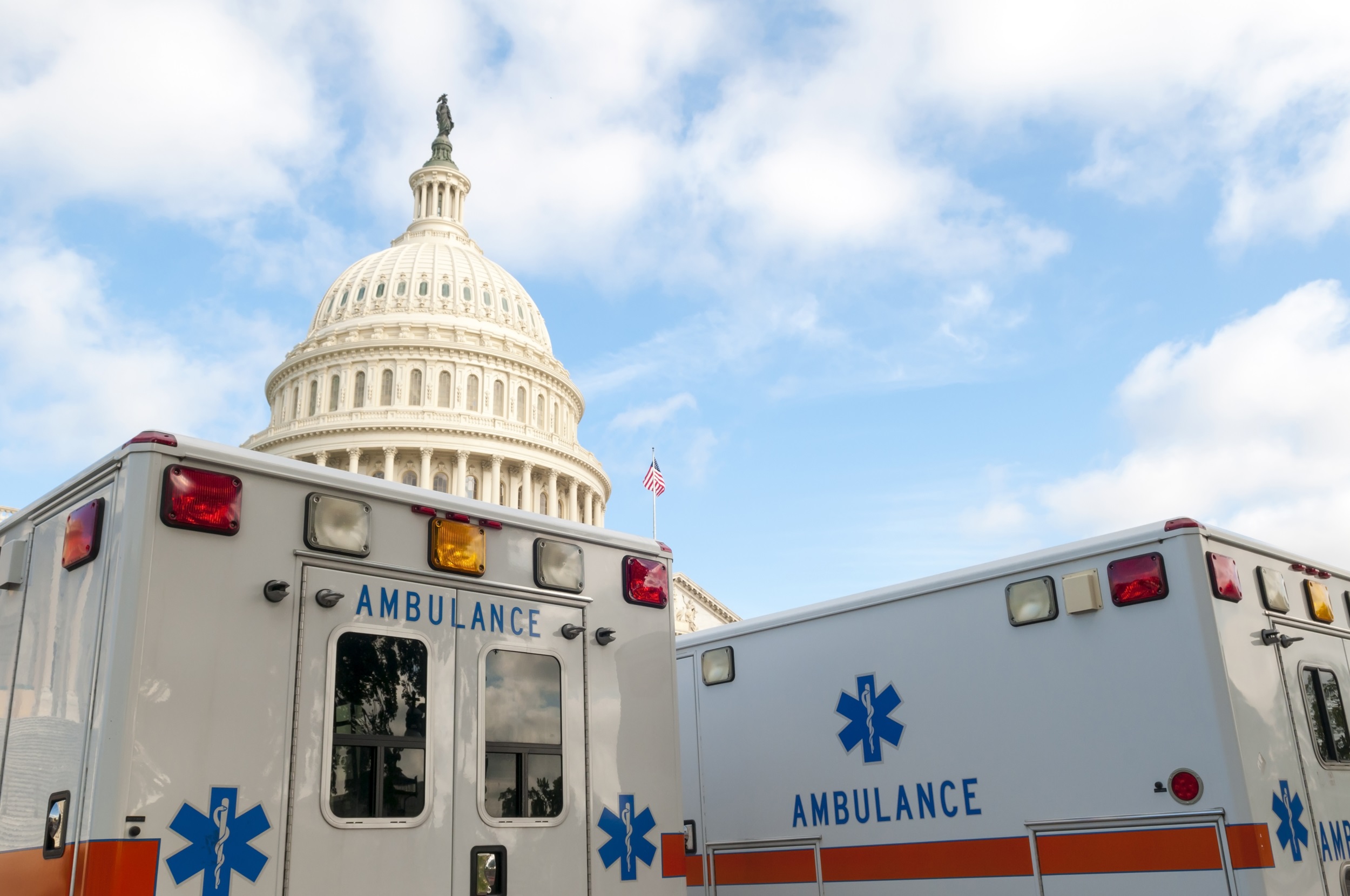Back to School and Vaccines

School is back in session! Preparing for the new school year can be challenging as parents shop for new school clothes or supplies to ensure their children are ready for the year. It is important to also consider how to prepare them to stay healthy during the school year. Children are exposed to germs, illnesses and accidents, and parents can prepare for the year by ensuring prescriptions are refilled and accurate, and vaccines are up to date.
Neffy - Intranasal Epinephrine
Children are exposed to many foods and other allergens at school that may result in an anaphylactic reaction. Anaphylaxis is a severe, life-threatening allergic reaction that may be the result of ingestion or exposure to milk, peanuts, eggs or non-food allergens like insect stings. Life-threatening anaphylaxis reactions result in 500,000 emergency room visits each year. For decades, the only treatment for anaphylactic reactions was an epinephrine autoinjector injection. These are marker- sized dosage forms that require the user to inject themselves into the muscle of their thigh. However, in August, a new dosage form called Neffy was approved. Rather than an autoinjector, this device administered epinephrine via a nasal spray. Approval was based on studies showing comparable epinephrine levels in the blood to injectable forms, with similar effects on blood pressure and heart rate.
Neffy is the first non-needle epinephrine dosage form for severe allergic reactions and the first new delivery method for epinephrine in more than 35 years. Neffy is administered as a single dose into one nostril, with a second dose if needed. Currently, Neffy is approved for children and adults who weigh at least 66 pounds. The product became available on the market in September. The manufacturer of Neffy, ARS Pharma, is also seeking approval from the FDA for a lower dose product for children who weigh 33-66 pounds by the end of 2024.
This novel dosage form of epinephrine offers multiple benefits. Neffy uses the same spray device as Narcan, a nasal spray for opioid overdose. The nasal spray reduces barriers to quick treatment, particularly for needle-phobic patients, including children. Another benefit is the extended shelf life of the nasal spray. Neffy has a shelf life of 30 months — much longer than the autoinjectors which typically last 18 months. Users of epinephrine must remember to check the expiration date and replace their devices before they expire to ensure they always have access to their life-saving medication. The extended shelf life of Neffy reduces the frequency of replacing epinephrine products. In addition, the nasal product can tolerate more extreme temperatures. It can withstand higher temperatures, up to 122 degrees, making it a potentially effective treatment if left in a car or outside for any length of time. If accidentally frozen, Neffy can be thawed and administered. However, a major drawback of Neffy is the associated cost. A two-pack of the medication is about $710 compared to the autoinjector which is $150.
ARS Pharma expects Neffy to be widely adopted, similar to Narcan’s uptake, due to the ease of administration. Medical professionals express optimism, noting that Neffy could save lives by providing a safer, easier-to-use option for treating anaphylaxis, particularly for needle-phobic patients. It may also be included in emergency kits for public places like airplanes and restaurants.
Vaccines - Influenza and COVID-19
Importance of Childhood Vaccines
Vaccines are critical in protecting children and the community against circulating diseases. For years, the country has benefited from herd immunity, which is when a large part of the population of an area is immune to a specific disease. However, in order for an area to benefit, at least 95% of the population must be vaccinated. The country is facing a challenge because parents are choosing not to vaccinate their children against diseases like measles, mumps, rubella, whooping cough, chicken pox, meningitis and the flu. Most parents still support childhood vaccinations. However, kindergarten exemptions rose to a median of 3.3% nationally during the 2022-2023 school year compared to 2.7% the year before. This hesitancy may stem from the fear of the long-term effects of vaccinating at a young age, religious reasons or just ease of opting out.
The consequences of a lower vaccination rate are evident in the most recent measles outbreak in Oregon, the largest measles outbreak in the state since 1991. If the vaccination rate continues to decline, the country may be faced with further outbreaks, so it is important to continue to educate the population on the risks.
Influenza
The US Centers for Disease Control and Prevention (CDC) recommends that every person aged six months or older should receive an influenza and COVID-19 shot annually. Flu vaccines stimulate antibodies in the body about two weeks after vaccination, which offer protection against the influenza virus. Each season new flu vaccines are manufactured based on which strains made people sick the previous season, the extent those viruses are spreading prior to the upcoming flu season, the efficacy of the previous season’s vaccine and the ability of the vaccine to provide cross-protection against a range of flu strains. Since the 2013-2014 season, flu vaccines have been quadrivalent, meaning they protected against four groups of influenza: flu A(H1), flu A (H3), flu B/Yamagata lineage virus and flu B/Victoria lineage virus. For the first time in over a decade, this 2024-2025 flu season will not be quadrivalent. This year, the vaccines will be trivalent, only protecting against three strains: flu A (H1), flu A(H3), and the flu B/Victoria. Based on the most recent data, the FDA determined the flu B/Yamagata strain no longer poses a public health threat and, therefore, should be removed from the vaccine formulation.
Flu season changes every year but can start as early as October and peaks between December and February. Vaccination against the flu is ideally in September or October but continues throughout the year if the flu is circulating. Flu vaccines are widely available at physician offices and at local pharmacies and can be administered by both providers. These vaccines are typically $0 to the member and cost the plan $20-$30 for the ingredient cost plus a $20 administration fee.
COVID-19
The COVID-19 vaccines share a few similarities with influenza vaccines. Like the flu vaccines, the CDC recommends everyone aged six months or older receive this season’s COVID-19 vaccine to protect against the COVID-19 virus. COVID-19 vaccines are also manufactured each year based on the circulating strains. Last year, COVID-19 vaccines protected against Omicron XBB.1.5. However, this year the prominent lineage is JN.1, which has several variants, including the KP.2 strain. Both Moderna and Pfizer-BioNTech will contain the specific KP.2 strain, whereas Novavax targets the JN.1 lineage. Receiving any COVID-19 vaccines will help prevent infection from the circulation strains and reduce the chance of long COVID-19, which can reoccur following an acute infection and remain for an extended duration.
Previously, COVID-19 vaccines fell under the Public Health Emergency (PHE). The ingredient cost was covered by the government and plans only had to cover a $40 administration cost. Once PHE expired on May 11, 2023, COVID-19 vaccines were required to be covered under insurance plans. Now the average ingredient cost is $130-$150 plus a $20 administration fee.
Sources:
- Tina Reed. “Vaccine Hesitancy Eats into Back-to-School Shots,” Axios, 2024.
- CDC Newsroom. “CDC Recommends Updated 2024-2025 COVID-19 and Flu Vaccines for Fall/Winter Virus Season,” CDC, 2024.
- FDA News Release. “FDA Approves First Nasal Spray for Treatment of Anaphylaxis,” FDA, 2024.
- Amy Isler. “After 35 Years, the EpiPen Gets a Needle-Free Alternative,” Verywell Health, 2024.
Biosimilars: 2025 and Beyond

Utilization of biosimilars, which are biologic drugs that are highly similar to an already FDA-approved biologic product, will likely continue to increase in 2025. Humira, which first faced biosimilar competition in January 2023, will see extensive competition among biosimilar products. Humira’s global sales once topped $20B annually but dropped to $14.4B in 2023. That number is likely to be much lower for 2024, as PBMs have begun to exclude Humira, including CVS Caremark, who excluded Humira on its major commercial formularies in April of this year.
Other PBMs are following CVS Caremark’s lead and moving to exclude Humira in 2025. Optum will exclude new utilizers in January 2025 but will allow current Humira utilizers to continue treatment with the brand product until sometime later in 2025 (no exact date has been provided yet). Express Scripts has similar plans but is giving clients the option to exclude all utilizers in January or allow current utilizers only to continue with the brand Humira until July 2025. Both strategies will further erode Humira’s market share.
Another strategy that has developed in the biosimilar market involves PBMs partnering with drug manufacturers on private-label products, allowing them to participate in the industry at a new level. We saw this first with CVS Caremark’s partnership with Cordavis on a Humira biosimilar, then Optum’s partnership with Nuvaila, as well as Express Scripts’ partnership with Quallent Pharmaceuticals. Many were concerned with the idea of a PBM being involved in the manufacturing and/ or distribution of a drug, but this strategy seems to allow for patient savings opportunities that many feared would disappear with biosimilar products in the form of copay assistance.
With many more brand biologic drugs losing patent protection in the coming years, this particular strategy seems to be gaining in popularity. In fact, Express Scripts and Optum have both announced plans to offer a biosimilar version of Stelara at $0 for eligible patients in early 2025 through their partnerships with Quallent and Nuvaila, respectively. VPS Rx Solutions will continue to monitor the biosimilar market in 2025, as we have in the past, and will work with our clients on additional strategies that can promote early adoption of these low-cost alternatives to expensive biologic products.
Sources:
- Tristan Manalac. “AbbVie’s Humira Continues to Lose Market Share as Biosimilars Gain Ground: Report,” BioSpace, 2024.
- Paige Minemyer. “Evernorth’s Accredo to Make Stelara Biosimilar Available at $0 Out-Of-Pocket,” Fierce Healthcare, 2024.
- Angela Maas. “Optum Subsidiary Nuvaila Will Offer Biosimilars of Stelara, Humira,” MMIT, 2024.
Politics and Healthcare

Healthcare policy and politics are deeply intertwined, with government actions significantly influencing the financing, delivery and quality of healthcare. As such, the control of government is a powerful determinant of health policies, making elections a crucial factor in shaping health policy. The president, the majority party in the House and Senate and state-level leadership all play pivotal roles in directing legislative efforts. However, when political power in Washington is divided, progress on healthcare legislation often stalls. Despite this, the president can influence health policy through administrative measures.
As the presidential election approaches in November, understanding the implications of healthcare policies on employer health plans is vital. Federal gridlock often prompts states to take more decisive action, so it’s also important to be aware of any state-level legislation targeting healthcare benefits.
The Erosion of ERISA Preemption
The landscape is changing, especially concerning the Employee Retirement Income Security Act (ERISA), which has historically shielded multi-state plans from varying state regulations. However, we are witnessing a concerning trend: the erosion of ERISA preemption. While ERISA has traditionally allowed employers to comply solely with federal rules, numerous state-level proposals are emerging that challenge this protection, particularly regarding PBM services.
As employers, it’s crucial to stay abreast of legislative updates affecting employee benefits for several reasons:
- Compliance: State laws may introduce specific requirements on employer-sponsored health plans. Staying updated ensures that employers remain compliant and avoid potential legal penalties.
- Cost Management: Changes in state legislation can impact the cost of providing healthcare benefits. Being aware of these changes allows employers to anticipate and manage costs effectively.
- Benefit Design: State laws may mandate certain benefits or coverage levels. Understanding these requirements helps employers design benefit plans that meet legal standards and employee needs.
- Risk Mitigation: Awareness of state legislation helps employers identify and mitigate risks associated with noncompliance, such as fines, lawsuits or reputational damage.
State-Level Legislative Developments
- California: Proposed regulations include licensing requirements for PBMs by the state board of pharmacy and limitations on network structures, including restrictions on mail and specialty pharmacies. A PBM analysis suggests these changes could increase plan spend by over 20%.
- New York: Proposed legislation would mandate PBM reimbursements to pharmacies at National Average Drug Acquisition Cost (NADAC) pricing. It would also require a considerable dispensing fee, which far exceeds the national average of roughly $2. The financial impact could reach clients with employees in New York.
The momentum for similar regulations is not limited to one end of the political spectrum; similar measures are emerging across numerous states. For example, Kentucky has set higher dispensing/administration fees, and Louisiana has recently passed laws impacting pharmacy reimbursement.
It’s worth noting that changes in costs associated with pharmacy benefits are not absorbed by PBMs; these costs are ultimately passed on to plans and members.
Employers may wish to stay informed about these developments and consider engaging with local legislators to share their perspectives.
- Stay Informed: Monitor proposed legislation in your state, its potential impacts, and the key legislators involved.
- Reach Out and Speak Up: Utilize letter templates to communicate with local representatives. If employers remain passive, only PBMs will advocate against these laws, perpetuating the notion that these initiatives are solely anti-PBM while adversely affecting employers and members.
The Federal Landscape
In addition to state legislation, federal healthcare policies, particularly those related to Medicare and Medicaid, may have indirect effects on commercial healthcare plans. A notable example is the Inflation Reduction Act (IRA) and its provisions for Medicare Drug Price Negotiations:
- Medicare Drug Price Negotiations: The IRA allows Medicare to negotiate prices for certain high-cost drugs, starting with 10 drugs in 2026. This is expected to lower costs for Medicare beneficiaries and reduce overall drug spending by the federal government.
- Market Influence: The negotiated prices for Medicare could set a precedent, potentially influencing drug pricing strategies across the broader market, including commercial health plans. Pharmaceutical companies might adjust their pricing models to align with the negotiated rates to maintain consistency and avoid significant price disparities.
- Increased Competition: By encouraging lower prices through negotiation, the IRA may foster increased competition among drug manufacturers. This could lead to more competitive pricing in the commercial sector as well.
- Rebates and Penalties: The IRA imposes penalties on drug companies that raise prices faster than inflation. This could discourage excessive price hikes, benefiting both Medicare and commercial health plans by stabilizing drug costs.
- Administrative Actions: The IRA grants the Secretary of Health and Human Services the authority to negotiate prices, which could lead to administrative actions that impact the broader healthcare market.
Overall, while the direct effects of the IRA’s Medicare drug pricing negotiations are focused on Medicare, the ripple effects could lead to more competition and potentially lower drug prices for commercial health plans as well.
The First 10 Drugs of the Medicare Drug Price Negotiation Program
The new prices will go into effect for people with Medicare Part D prescription drug coverage in 2026:
| Drug Name | Commonly Treated Conditions | Number of Medicare Utilizers in 2023 | Drug List Price in 2023 (30-Day Supply) | Negotiated Price for 2026 (30-Day Supply) | Savings (%) |
| Eliquis | Prevention and treatment of blood clots | 3,928,000 | $521 | $231 | $290 (-56%) |
| Jardiance | Diabetes, Heart failure, Chronic kidney disease | 1,883,000 | $573 | $197 | $376 (-66%) |
| Xarelto | Prevention and treatment of blood clots, Reduction of risk for patients with coronary or peripheral artery disease | 1,324,000 | $517 | $197 | $320 (-62%) |
| Januvia | Diabetes | 843,000 | $527 | $113 | $414 (-79%) |
| Farxiga | Diabetes, Heart failure | 994,000 | $556 | $178.50 | $377.50 (-68%) |
| Entresto | Heart failure | 664,000 | $628 | $295 | $333 (-53%) |
| Enbrel | Rheumatoid arthritis, Psoriasis, Psoriatic arthritis | 48,000 | $7,106 | $2,355 | $4,751 (-67%) |
| Imbruvica | Blood cancers | 17,000 | $14,934 | $9,319 | $5,615 (-38%) |
| Stelara | Psoriasis, Psoriatic arthritis, Crohn’s disease, Ulcerative colitis | 23,000 | $13,836 | $4,695 | $9,141 (-66%) |
| Fiasp, Fiasp FlexTouch, Fiasp PenFill ___________ NovoLog, NovoLog FlexPen, NovoLog PenFill |
Diabetes | 785,000 | $495 | $119 | $376 (-76%) |
Source: “Medicare Drug Price Negotiation Program: Negotiated Prices for Initial Price Applicability Year 2026,” CMS, 2024.
In conclusion, healthcare and politics are closely linked, and upcoming elections could reshape health policies. Employers should stay informed about state legislation and federal initiatives, which may affect costs. Engaging with legislators and participating in policy discussions will be essential for protecting employer interests and ensuring a favorable benefits landscape moving forward.
Sources:
- Kelly Brantley (Moderator). “Election 2024: What’s at Stake for Healthcare?” Avalere, 2024.
- CMS. “Medicare Drug Price Negotiation Program: Negotiated Prices for Initial Price Applicability Year 2026,” CMS, 2024.
- Joe Markland. “Benefits Think How Health Insurance May Change, Regardless of Who Wins the Election,” EBN, 2024.
- Tricia Neuman, Julliet Cubanski, Larry Levitt. “The First-Ever Government Negotiation Process for Drugs Has Finished, but the Politics Are Ongoing,” Health Affairs, 2024.
- Bill Hammond. “State Regulators Propose a $10 Fee for Filling Prescription,” Empire Center, 2023.
- California Pharmacists Association. “SB 966 (Wiener) CPhA-Sponsored Bill: Pharmacy Benefits Managers: Regulation,” CPA, 2024.
